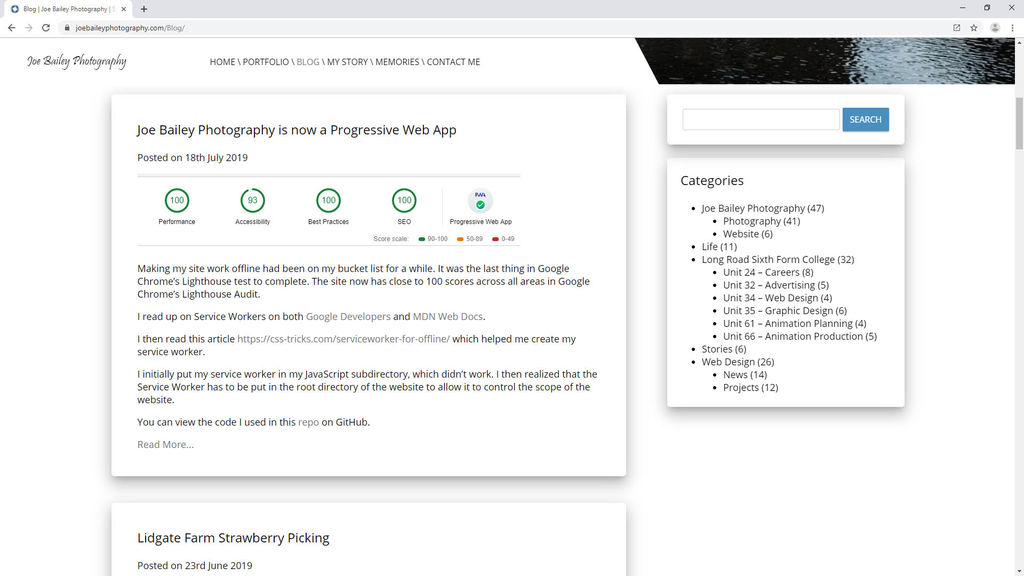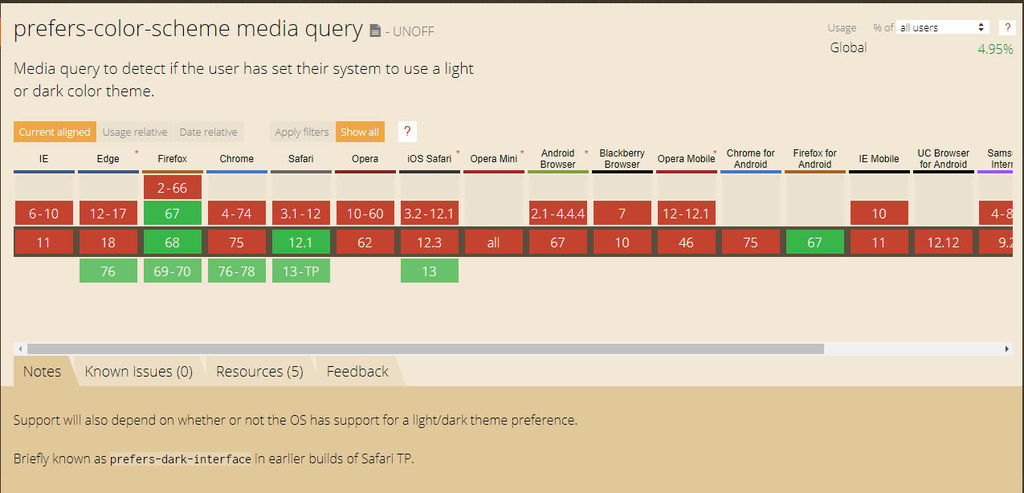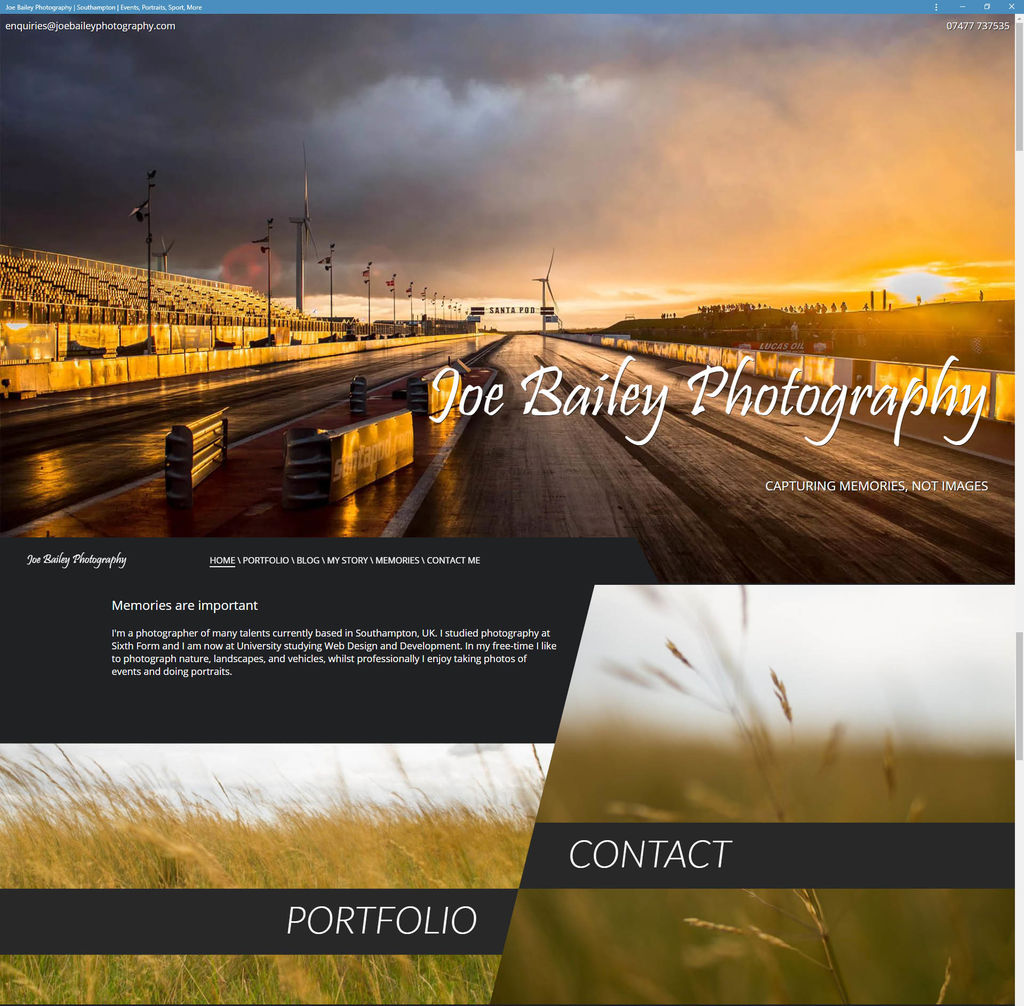To mark the beginning of my second year at University I thought that I would try learning a new skill, namely Vue.js. I usually struggle to learn something if I don’t see any real practical application for it, but this time I figured I could turn my photography portfolio into a dynamic Vue.js enhanced page.
I started with creating a component for the portfolio elements on the homepage. I created a data set that contained all the information for the component. Vue then iterated over each one and created them. I then did the same for the images, once you’d clicked through to a specific component.
Next, I had to implement Vue Router, in order to get dynamic URLs. This was very tricky and took me a while to figure out that I needed to place the Portfolio page within a subfolder to apply .htaccess rules to it. Everything works now and it’s even a better way of showing all the images at once compared to the old method of just having the images pop up in a Lightbox. This would have never been possible without Vue as it would have taken too much time to hard code each image (there are 100s).
The next steps are to do a bit more styling and arrange the photos so that portraits and landscapes aren’t all next to each other breaking the flow of the page. I’m also going to take this as an opportunity to go through my portfolio and slim them down to around 25 of my best photos. The code is quite messy too so I might put each component in its own Vue file. In the far future, I’m thinking about possibly using Vue Native to turn the portfolio into an app.
Overall, it’s been a great experience learning Vue and it’s one step closer to a full-time developer role after I graduate.



